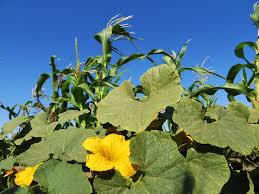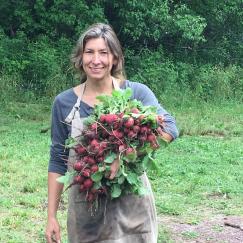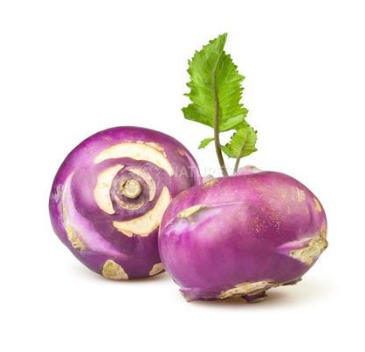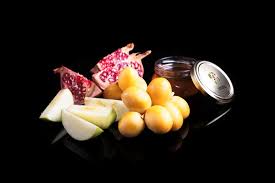I was thinking of writing about the well-known association between pumpkin and Halloween, and the lovely custom of carving a pumpkin and placing a flashlight in it, but then I remembered the Native American story about the pumpkin's two sisters, and their sweet childhood together.
For some reason, when you think of a character's sisters from a fairy tale, they typically do not excel in social behavior. See, for example, Cinderella's sisters, and the extent to which they hadn't wanted her to go to that ball. But the tale of the pumpkin is different – she had exemplary sisters, and they helped each other, supported, encouraged and brought much good and blessing to the world.
The Indians, who knew what sustainable agriculture was, plowed the fields every spring, and carefully prepared small pits for planting. In each of these, the following combination was placed: a small piece of fish, a pumpkin seed, a corn kernel and a bean. The seeds were affectionately placed in the pit, gently covered, and three seedlings sprouted from each one, called by the Indians "the three sisters." These sisters appreciated the value of mutual help, natural fertilization, and communal life in a tribe – in which each contributes his skills and strengths for the good of the group, and that the only way to live in prosperity is to create a whole that is greater than the sum of it's parts.
Sister Corn was the one who grew to the highest height, therefor, offering a helping hand to her sister, the bean – who was indeed seeking sturdy support to climb and wrap around. Her warm embrace stabilized her tall sister, the corn, preventing her from breaking under the winds. Under both of them, Sister Pumpkin stretched out her leaves throughout the field, keeping stray weeds away from her other two sisters, protecting the soil from erosion and balancing the temperature and moisture of the soil for the three of them.
Since they did not compete over the same resources (the different leaves and height differences prevented the competition for light), they grew well side by side, with Sister Bean's roots enriching the soil with nitrogen and benefiting her siblings. Their differences (botanically speaking, they do not really belong to the same family) ensure that one does not get infected with the other's diseases, so the chance that all the plants in the field will be destroyed by a single mischievous bug, is very small.
They also collaborated in a nutritional sense: the bean legume provides what corn is missing to become a whole grain, and brings with it protein and nutritional fiber. The corn, which includes carbohydrates and digestive-friendly fiber, lacks only two amino acids in order to be a complete protein – which it gets from the beans.
This folklore existed in the days when there was no other agriculture except the permaculture – not only because the synthetic formulas of chemicals and fertilizers were not yet invented, and hardworking people wearing white robes in labs did not develop insecticides and pesticides; But also out of sincere listening and observance of nature, endless appreciation of what grows and is provided from the earth and complete mindfulness of the cycle of nature and man's part in it. Beans, pumpkin and corn, the Native Americans' main nourishment, were not only a source of food, but also a myth about relationships, natural cycles, and purpose, a reason to thank the Great Spirit for life and existence and rejoice.
May we also be grateful for what we have.
Yours,
Maggie's Garden Team
Forecast:
In the ORGANIC vegetable baskets we expect (draft only):
Cucumber
Tomato
Lettuce
Potato
Eggplant
Pepper
Parsley
Pumpkin
Swiss chard
The LARGE organic vegetable baskets also include:
Beet
Coriander
Sweet potatoe
In the ORGANIC fruit baskets:
Clementine
Orange
Banana
The large ORGANIC fruit baskets also include:
Dates – Brhai
Red pomelo
New! New! The ORGANIC Green Basket:
Swiss chard
Celery
Spinach
Mint
Dill
A kind of lettuce
Onion
Sprouts












